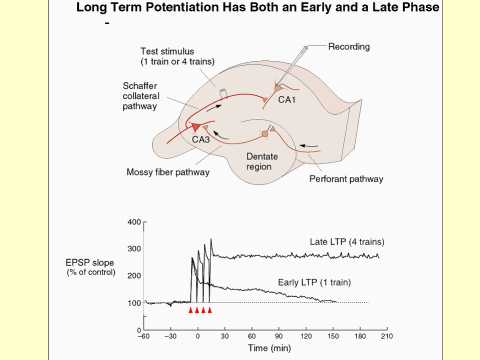 |
Long-term
potentiation (LTP) in the hippocampus
- Three major pathways denote the direction of the
impulse flow, each of which gives rise to LTP. The perforant pathway from
the subiculum forms excitatory connections with the granule cells of the
dentate gyrus. The mossy fiber pathway, formed by the axons of the granule
cells of the dentate gyrus, connects the granule cells with the pyramidal
cells in area CA3 of the hippocampus. The Schaffer collateral pathway
connects the pyramidal cells of the CA3 region with the pyramidal cells in
the CA1 region of the hippocampus.
- A schematic time course depicting the early and late
phases of LTP in the Schaffer collateral pathway. A single train of
stimuli for one second at 100 Hz elicits an early LTP, and four trains at
10-minute intervals elicit the late phase of LTP. The early LTP lasts
about trwo hours and the late LTp lasts more than 24 hours.
|
